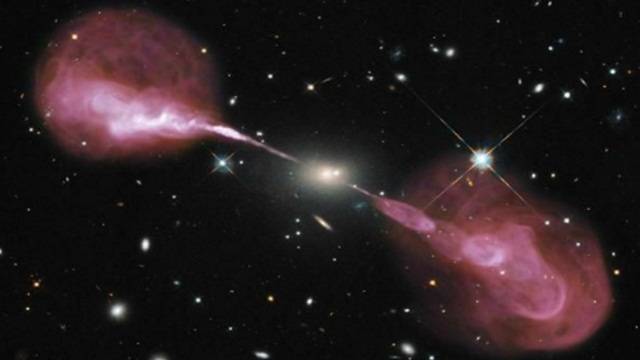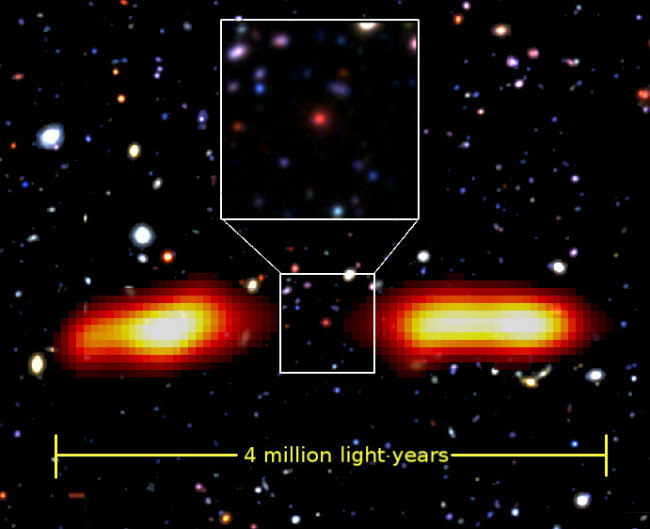
Indian Astronomers Discovered Dying Giant Radio Galaxy
A team of Astronomers at the National Centre for Radio Astrophysics (NCRA-Pune) and Tata Institute of Fundamental Research (TIFR) have discovered a giant radio galaxy of gigantic size. The Giant Metrewave Radio Telescope (GMRT) is watching the galaxy, which was created about nine billion light years ago. The discovery was made by astronomers using the Giant Meter wave Radio Telescope.

The Giant Meterwave Raio Telescope is located in Kohad, in Pune. It is located in the constellation Cetus. The newly discovered galaxy has been given the scientific name ‘J021659-044920’, is the newest member of this ‘elite’ group and emits powerful radio waves. The galaxy has an end-to-end extent of 4 million light-years. Radio galaxies measuring less than a million light years are common, but such size galaxies are extremely rare.
“There are multiple reasons that make this galaxy so rare. It has a large extent when you see it in the radio band and there are only about 100 such galaxies in the universe. It was discovered at a very large distance from the earth and there are only about five or six distant, giant radio galaxies. The galaxy is a phase when radio emission is dying away, which makes it quite unique,” said Dr Yogesh Wadadekar, a scientist at NCRA.
A radio galaxy is a galaxy that produces radiation that falls in the radio-frequency range of the electromagnetic spectrum. Under special circumstances, the central black hole of the galaxy stops producing radio jets, and the bright radio lobes fade away within a few million years. The image of J021659-044920 shows that the jet has stopped and the radio lobes are starting to fade away. Low-frequency radio telescopes like the GMRT are used to study dying radio objects.

“Such dying radio objects are best studied using a low-frequency radio telescope such as GMRT. The GMRT, the world’s largest radio telescope facility operating at low radio frequencies, is an array of 30 fully steerable, 45-metre diameter antennas, spread over a 30 km region around Khodad, near Narayangaon town of Pune district,” added Wadadekar. The GMRT, built and operated by National Centre for Radio Astrophysics, has been in operation since 2002.
By using data from multiple telescopes, the team could carry out a comprehensive and detailed analysis of physical conditions around this distant galaxy.